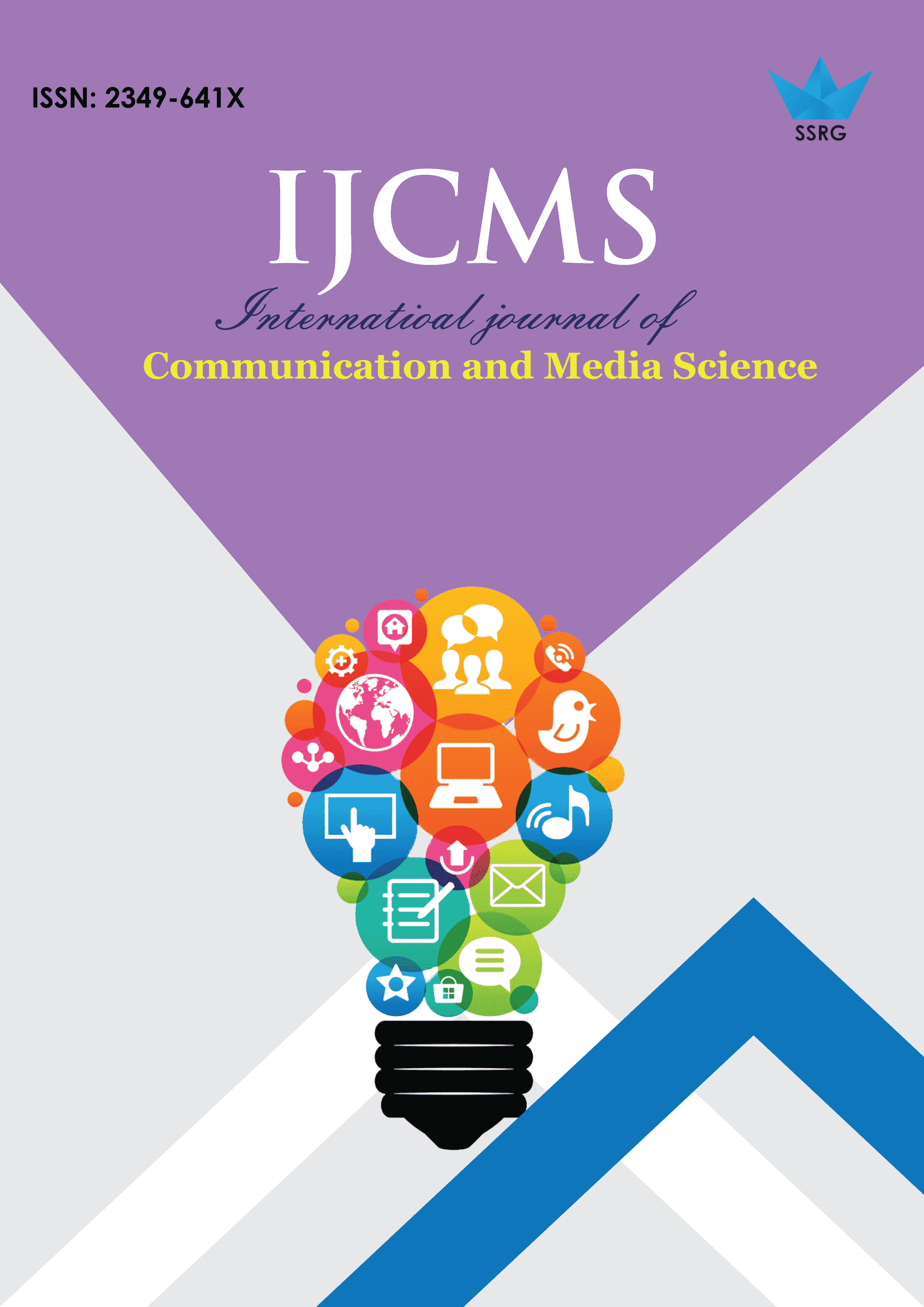Connecting the Tactile Dots: A Decisive Literacy Skill For The Visually Challenged In The Information Age

| International Journal of Communication and Media Science |
| © 2021 by SSRG - IJCMS Journal |
| Volume 8 Issue 2 |
| Year of Publication : 2021 |
| Authors : Naneetha R, Dr Srihari M |
How to Cite?
Naneetha R, Dr Srihari M, "Connecting the Tactile Dots: A Decisive Literacy Skill For The Visually Challenged In The Information Age," SSRG International Journal of Communication and Media Science, vol. 8, no. 2, pp. 23-26, 2021. Crossref, https://doi.org/10.14445/2349641X/IJCMS-V8I2P104
Abstract:
Acquiring literacy is an empowering process that enables access to knowledge and information which builds opportunities for better life. The ability to read and write is regarded as birth right, whereas all persons must have literacy which prospers their social life to be a part of society. Globally, the process of learning and construction of messages is primarily dependent upon printed words. But braille literacy in education creates an environment that opens a world of possibilities for the visually challenged to develop them as a person in terms of knowledge and shape their behaviour in different situations. However, the visually challenged demands specific learned competencies in attaining knowledge which is the medium for communication. Braille brings the joy of reading and writing from alphabets to musical notations to express their thoughts. Therefore, Braille literacy in the digital age is still critical for individuals to have knowledge platforms in the transitional environment. This paper explores how braille plays a predominant role in accessing the information, to know the fundamental representation of letters and words, which improves reading and writing skills for the visually impaired. A qualitative approach is incorporated, and a total of five cases are explored to know an in-depth understanding of braille literacy skills in the digital age among the visually challenged. The study results show that braille provides the representation of letters in tactile dots, the conception of meanings and symbols which enable visually challenged to develop knowledge and potential to participate in the wider society.
Keywords:
Communication, Reading, Writing, knowledge, Braille.
References:
[1] Annie. (2020, November 20). 5 Ways Braille Makes Learning Mathematics Easier. Retrieved from https://thinkerbelllabs.com/blog/5-ways-braille-makes-learning-mathematics-easier/
[2] Cognitiva, C. Touching Your Words: Why Braille Reading Is Special.
(2019) Retrieved from http://www.cienciacognitiva.org/?p=1861
[3] Davis, G. Why Is Reading Important? Retrieved from Learn to Read: https://www.learn-to-read-prince-george.com/why-is-reading-important.html (2021).
[4] Enago. Importance of Punctuation in Research Papers. Retrieved from Enago academy: https://www.enago.com/academy/importance-of-punctuation-in-research-paper-part-1/ (2021).
[5] Guerrero, B. A. An Investigation into the Commonalities of students who are Braille Readers in a Southwestern State Possess Comprehensive Litercay Skills. Special Education. Texas: Texas Tech University (2017).
[6] Harappa. Importance And Benefits Of Reading Skills In Communication. Retrieved from Harappa: https://harappa.education/harappa-diaries/importance-of-reading/ (2020).
[7] John, J. Recognition of Documents in Braille (2015).
[8] Jones, L. The importance of punctuation in English. Retrieved from Lingoda: https://blog.lingoda.com/en/importance-of-punctuation-english/ (2020).
[9] Keyser, A. Why is Reading Important? Retrieved from WorksheetCloud: https://www.worksheetcloud.com/blog/why-is-reading-important/ (2021).
[10] Munyi, C. M. Analysis of Teachers perceptions on Instruction of Braille Literacy in Primary schools for Learners with Visual Impairements in Kenya. Kenyatta University, Special Needs Education , Kenya (2017).
[11] Nadeem, R. Selecting Litercay Approaches in Braille for students with Visual Impairments. Ontario Institute for Studies in Education , Department of Curriculum, Teaching and Learning. University of Toronto(2015).
[12] Renata Mosca, A. K. Language and communication development in preschool children with visual impairment: A systematic review. South African Journal of Communication Disorders, 62(1) (2015) 119. doi:10.4102/sajcd.v62i1.119
[13] Services, I. L. More Than the ABCs: The Alphabet’s Role in Language and Communication. Retrieved from Internatioanl Language services: https://www.ilstranslations.com/blog/alphabet-in-language-and-communication/ (2019)
[14] Tiger, K. A. Teaching Early Braille Literacy Skills Within a Stimulus Equivalence Paradigm to Children with Degenerative Visual Impairments. Journal of Applied Behavior Analysis, 43(2) (2010) 181–194. doi:10.1901/jaba.2010.43-181
[15] Whitaker, E. Freedom Scientific BlogElizabeth Whitaker January 4, 2020. Retrieved from https://blog.freedomscientific.com/the-world-at-your-fingertips-braille-literacy-and-the-digital-age/https://blog.freedomscientific.com/the-world-at-your-fingertips-braille-literacy-and-the-digital-age/ (2020).
[16] Yong, J. 10 hilarious examples that prove punctuation makes a huge difference. Retrieved from Insider, Design Taxi: https://digitalsynopsis.com/tools/punctuation-marks-importance-rules-usage/ (2015).

 10.14445/2349641X/IJCMS-V8I2P104
10.14445/2349641X/IJCMS-V8I2P104